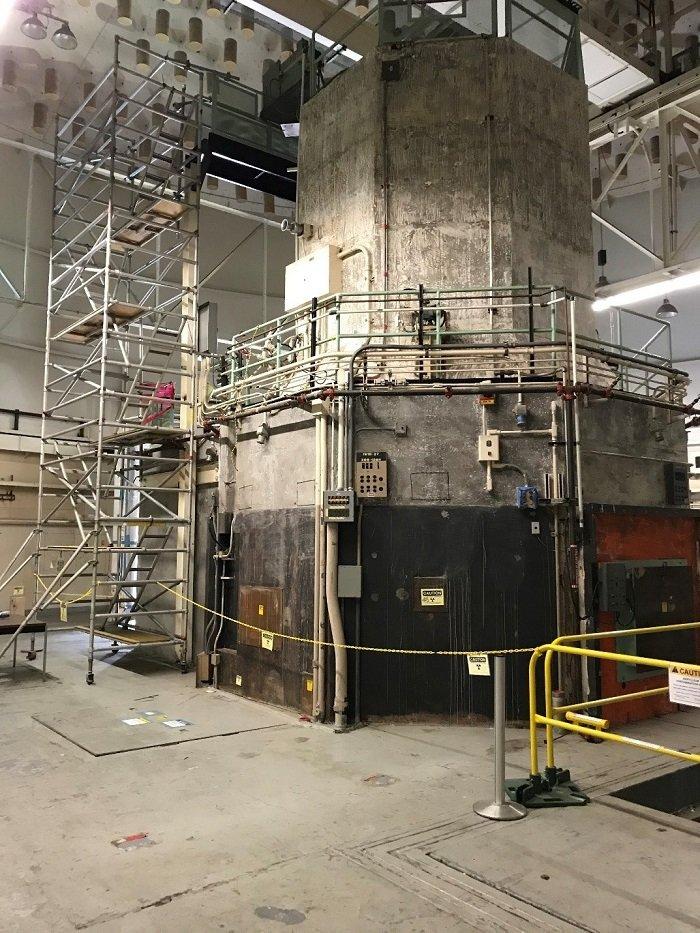Removal of surface contamination: Under many circumstances, surfaces of buildings and other man-made structures can become contaminated or marred with materials that are difficult to remove, safely. This is particularly true if the contaminant presents an aerosol hazard, such as radioactive materials or beryllium compounds, so that physical agitation in air, such as would occur with grinding, sand-blasting, or laser ablation would generate a considerable environmental risk, especially to those who were performing the decontamination. Because our new process does not evaporate or boil the surface of the material, it is much more energy-efficient and gentle than any prior laser process and, because it confines the removed material, no aerosol is generated.
The new LLNL technique works by transiently removing and trapping concrete or rock surface material, so that contaminants are confined in a manner that is easy to isolate and remove. Our studies suggest that 10 m2 of surface could be processed per hour. The technique easily scales to more surface/hr.
The new process is:
- more energy efficient, gentle, and controlled than grinding or direct laser ablation of such surfaces.
- safe by confining the removed material, and at the same time greatly-reducing the risk of cracking/damaging the bulk of the target material.
- relatively-low-temperature method to comminute many refractory materials. Allows the preservation of sample components that might otherwise be lost, if exposed to high, prolonged temperatures in air or in vacuum. This could be valuable to any company that performs chemical analysis of solid samples.
- a gentle, energy-efficient, and safe method to decontaminate surfaces, including rough, non-flat, non-horizontal surfaces. This could be valuable to any company that performs decontamination of buildings, for example.
- a new method to "drill" non-round shapes into concrete, rock, and similar materials. This could be valuable to any company that performs forming or machining of concrete, minerals, or ceramics.
| Feature | Benefit |
|---|---|
| The new LLNL process effectively removes a normally-insoluble material, such as concrete or rock | Ability to decontaminate, safely, a non-flat, non-horizontal surface, without generating an aerosol |
| Except for trapped gases, The new LLNL process comminutes concrete and rock/mineral samples without losing components that are volatile at ablation temperatures | Lower margin of error and |
| Energy efficiency | Lower inspection costs |
| Better sampling coverage | Better assessment of whether decontamination has been achieved |
LLNL has conducted bench scale demonstrations of the technique. The technology is expected to scale effectively and easily.
US Patent No. 10016844 Chemical, biological, and radioactive contamination remediation with lasers published 07/10/2018


